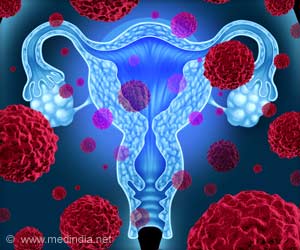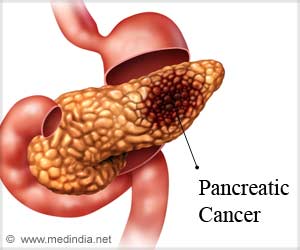Researchers at the Mayo Clinic have identified an enzyme called COX-2 that may help in the prediction and treatment of benign breast cancer.
Researchers at the Mayo Clinic have identified an enzyme called COX-2 that may help in the prediction and treatment of benign breast cancer.
The team suggests that an enzyme found in some breast tissue is a strong indicator that a woman will develop the cancer later in life.Some women who have a breast biopsy are told that while they don’t have cancer, they do have atypical hyperplasia, cells that aren’t quite normal and might become cancerous someday. This happens to one-fourth of women undergoing breast biopsies but no one knows which individuals are at risk.
In their quest to discover who is at risk, Mayo Clinic scientists are building a biopsy profile to try to predict cancer outcome.
The research team discovered that women whose atypia tissue expressed COX-2 enzymes were more likely to develop breast cancer subsequently, and that the more the enzyme expressed, the higher the risk.
Specifically, 20 years after a biopsy in which atypia was found, 31 percent of women with high levels of COX-2 in their atypia sample had developed breast cancer, versus 14 percent of those with no COX-2 expression. For those with moderate levels of COX-2, 24 percent had developed breast cancer.
“Based on these findings, COX-2 expression in atypia may be a biomarker of risk of progression to breast cancer,” says the study’s senior investigator, Mayo Clinic oncologist Lynn Hartmann, M.D.
Advertisement
“This study raises the possibility of targeting COX-2 in selected women to reduce their risk of breast cancer,” she added.
Advertisement
Cyxlooxygenase (COX) enzymes produce prostaglandin compounds responsible for pain and inflammation, and nonsteroidal anti-inflammatory drugs (NSAIDs) are designed to reduce expression of COX enzymes, although some NSAID use has been associated with side effects (most notably possible kidney failure). COX-2 is a form of COX that is not usually found in normal tissues but which has been associated with several cancers, including ductal carcinoma in situ and invasive breast cancers.
In this study, researchers examined breast biopsy samples that contained atypia for COX-2 expression which has never been done before.
Investigators looked at 235 women who had a breast biopsy following a mammogram at Mayo Clinic from 1967 through 1991, and who were diagnosed with the atypical hyperplasia cell growth disorder.
During an average follow-up period of 15 years, 41 (17 percent) of the women developed breast cancer. The average time for that breast cancer to be diagnosed was 11.4 years.
The researchers examined the biopsies for the level of COX-2 expression and for other variables, such as the number of areas (or foci) within the biopsy that contained atypical growth. They found that moderate expression was identified in 71 (30 percent) of the samples and that 34 (14 percent) of the biopsies exhibited strong expression of the enzyme.
The researchers calculated that, among the women in the study group, the absolute risk of developing breast cancer 15 years after a diagnosis of atypical hyperplasia was 13 percent in biopsies with little or no COX-2 expression, 19 percent with moderate COX-2 expression, and 25 percent with strong COX-2 expression.
In women who had been followed for 20 years or more, the association was more definitive: stratification of risk was 14 percent, 24 percent, and 31 percent, respectively.
The finding that risk of later breast cancer was associated with increasing levels of COX-2 expression was of borderline statistical significance (p=.07), likely due to the small sample size Dr. Hartmann said.
“But higher expression levels were tightly linked to an increased number of abnormal foci in the biopsy, which we had earlier found to be a strong risk factor for breast cancer,” she added.
The researchers also assessed the relative risk of developing breast cancer, based on COX-2 expression in atypical hyperplasia, compared to a “control” population of unaffected women, and found that little COX-2 expression was associated with 2.6 times the risk, moderate COX-2 expression increased risk by 3.5 times, and a strong expression of COX-2 elevated risk by more than 5.6 times, compared to women in the general population.
“COX-2 appears to be a biomarker that further stratifies breast cancer risk among women with atypia and may be a relevant target for chemoprevention strategies,” said Dr. Hartmann.
The study appears in the March 11 online edition of the Journal of the National Cancer Institute.
Source-ANI
SUN/L











